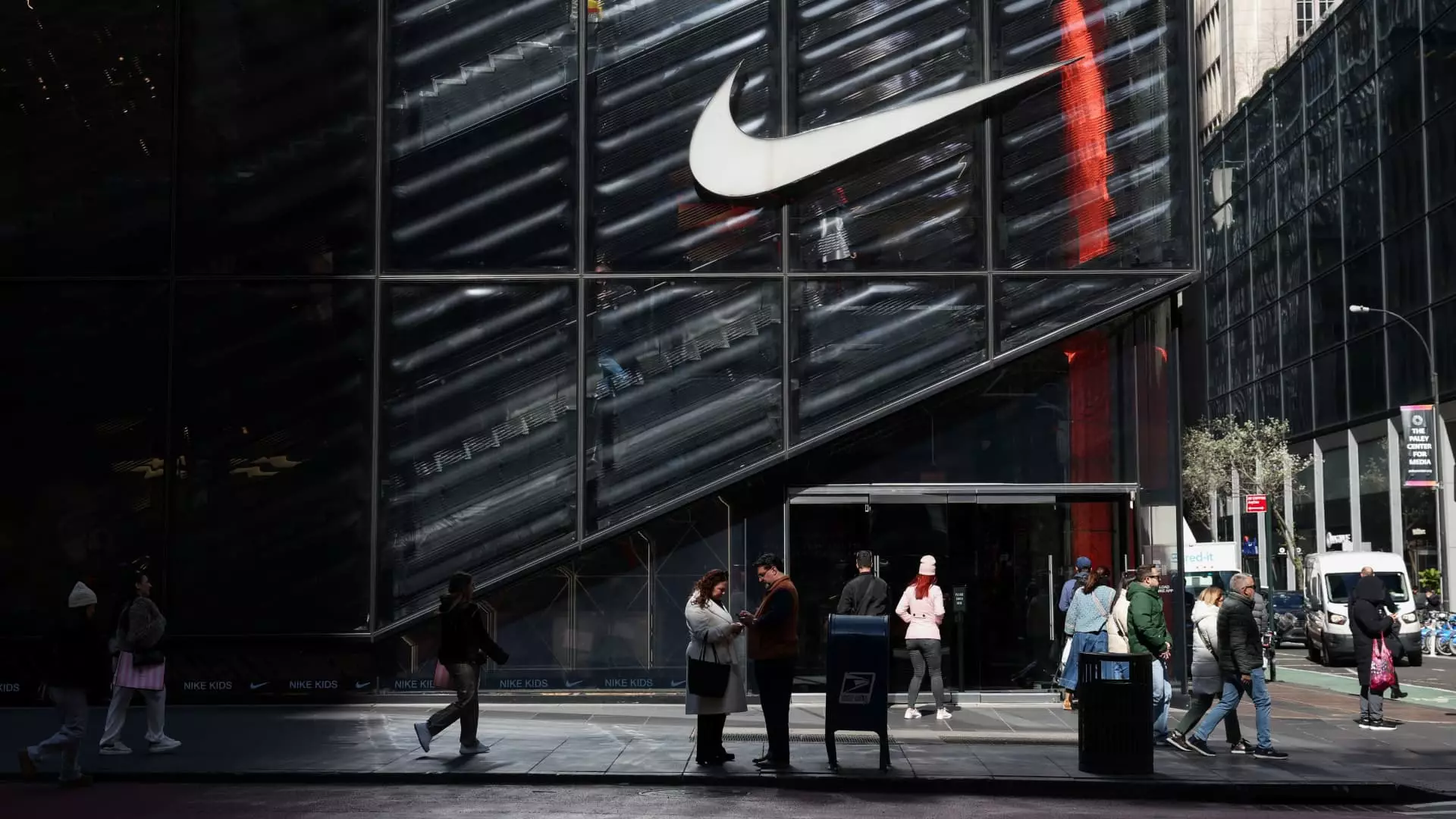In recent months, the economic landscape of the United States has taken a tumultuous turn, largely due to President Donald Trump’s sweeping tariff policies. The impacts have been dramatic, with stocks across multiple sectors nosediving and companies scrambling to adapt to an increasingly hostile import environment. For anyone watching the business news closely, the concerns are palpable. These tariffs, especially those targeted at countries like Vietnam—where notable American brands source a significant portion of their products—are not simply political chess moves; they are major economic shocks that the public and private sectors must grapple with.
Lululemon’s Distress: A Case Study in Vulnerability
To illustrate this sentiment, let’s take a closer look at Lululemon. The athletic wear company saw its shares plummet by over 12% in response to tariffs, particularly a staggering 46% imposed on goods imported from Vietnam, where about 40% of its products are sourced. The stark reality for Lululemon—and indeed for many businesses reliant on overseas manufacturing—is that these tariffs are not just numbers on a spreadsheet; they represent a seismic shift in operations, pricing structures, and ultimately consumer behavior. It’s almost a cruel irony: as consumer preferences veer toward imported goods, the implementing of tariffs works like a double-edged sword, impacting both the companies’ bottom lines and their customers’ wallets.
Nikes’ Stumble: A Brand at Crossroads
Nike, another industry giant, has also felt the sting, with shares declining roughly 9% after tariffs were lifted on various imported products. The company sources about half of its footwear from China and Vietnam, and now must contend with tariff rates of 54% and 46%, respectively. In the world of branding and marketing, Nike’s ethos has always revolved around community and accessibility. But how can a company maintain its image of being ‘for the people’ when essential goods become unaffordable due to government policy? The gap between brand vision and consumer cost continues to widen under the current regime, posing a serious threat to long-term loyalty among their consumer base.
Discount Retailers: Staring Into the Abyss
The economic repercussions are not limited to giants like Lululemon and Nike. Discount retailers, such as Dollar Tree and Five Below, have also faced devastating drops—over 10% and 15%, respectively. These companies thrive on offering affordable imports to budget-conscious consumers. But with prices on the rise as a direct response to new tariffs, are they inadvertently positioning themselves out of their own target market? Dollar Tree’s CEO has hinted at the possibility of raising prices to offset losses, but can a brand built on the promise of low-cost goods afford to break that promise? Uncertainty hangs heavily over these businesses as they navigate a new terrain where their very essence might be challenged.
Bluestorm Over Big Tech and Finance
Meanwhile, the tech industry has not emerged unscathed. Shares of tech titans such as Nvidia, Apple, and Amazon have all taken hits, driven more by investor fears than by actual product viability. As tariffs make manufacturing costs soar, tech companies’ margins are also put under severe pressure. Is it reasonable to expect that consumers will continue to purchase premium tech products when prices might rise sharply? The concern is that this economic climate might stagnate innovation and growth, leading to a broader recessionary trend.
Financial institutions have not remained immune to these developments either, as evidenced by significant declines in bank stocks like JPMorgan and Citi. It raises an important question: Are investors beginning to question the sector’s core stability when the ripple effects of tariffs are felt so widely? With the banks’ stakes in the economy, their retreat suggests more than just short-term caution; it implies a long-term uncertainty hanging over our economic future.
Luxury and Lifestyle: Entering a New Era of Caution
Even sectors not as directly tied to import prices, like luxury home furnisher RH, witnessed devastating declines after posting weak fourth-quarter earnings amid unprecedented market conditions. Their acknowledgment of facing the “worst housing market in almost 50 years” signals deep-rooted issues that cannot be ignored. This downturn serves as a knell for a lifestyle economy that thrives on consumer confidence—a treacherous position in a climate where any economic misstep could lead to substantial fallouts.
As we continue to observe these evolving trends, one can only hope for a recalibration of policies that stabilize rather than destabilize. Yet, as we brace ourselves for potential further fallout, it is essential to recognize that we are not merely navigating an economic downturn; we are in the throes of a transformative moment that could define the landscape for years to come.

